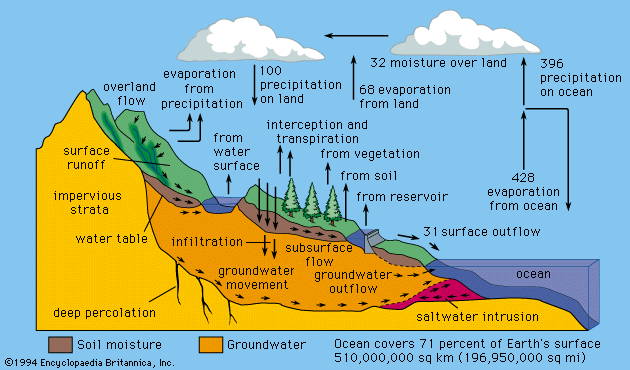Table 1: Water Masses at the Earth's Surface
Hydrosphere
Hydrosphere is discontinuous layer of water at or near the Earth's surface. It includes all liquid and frozen surface waters, groundwater held in soil and rock, and atmospheric water vapour.
Water is the most abundant substance at the surface of the Earth. About 1.4 billion cubic kilometres (326 million cubic miles) of water in liquid and frozen form make up the oceans, lakes, streams, glaciers, and groundwaters found there. It is this enormous volume of water, in its various manifestations, that forms the discontinuous layer, enclosing much of the terrestrial surface, known as the hydrosphere.
Central to any discussion of the hydrosphere is the concept of the hydrologic cycle. This cycle consists of a group of reservoirs containing water, the processes by which water is transferred from one reservoir to another (or transformed from one state to another), and the rates of transfer associated with such processes. These transfer paths penetrate the entire hydrosphere, extending upward to about 15 kilometres (nine miles) in the Earth's atmosphere and downward to depths on the order of five kilometres in its crust.
Table 1: Water Masses at the Earth's Surface
volume (in millions of percent reservoir cubic kilometres) of total Oceans 1,370.0 97.25 Ice caps and glaciers 29.0 2.05 Deep groundwater* 5.3 0.38 (750-4,000 metres) Shallow groundwater 4.2 0.30 (less than 750 metres) Lakes 0.125 0.01 Soil moisture 0.065 0.005 Atmosphere** 0.013 0.001 Rivers 0.0017 0.0001 Biosphere 0.0006 0.00004 Total 1,408.7 100 *The total interstitial water in the pores of sediments is on the order of 50-300(10^6) km^3. **As liquid equivalent of water vapour. ^ indicates exponentiation. Source: Adapted from Elizabeth Kay Berner and Robert A. Berner, The Global Water Cycle: Geochemistry and Environment, copyright 1987, Table 2.1, p. 13. Reproduced by permission of Prentice Hall, Inc., Englewood Cliffs, N.J.
Hydrologic cycle
cycle that involves the continuous circulation of water in the Earth-atmosphere system. Of the many processes involved in the hydrologic cycle, the most important are evaporation, transpiration, condensation, precipitation, and runoff. Although the total amount of water within the cycle remains essentially constant, its distribution among the various processes is continually changing.
Evaporation, one of the major processes in the cycle, is the transfer of water from the surface of the Earth to the atmosphere. By evaporation, water in the liquid state is transferred to the gaseous, or vapour, state. This transfer occurs when some molecules in a water mass have attained sufficient kinetic energy to eject themselves from the water surface. The main factors affecting evaporation are temperature, humidity, wind speed, and solar radiation. The direct measurement of evaporation, though desirable, is difficult and possible only at point locations. The principal source of water vapour is the oceans, but evaporation also occurs in soils, snow, and ice. Evaporation from snow and ice, the direct conversion from solid to vapour, is known as sublimation. Transpiration is the evaporation of water through minute pores, or stomata, in the leaves of plants. For practical purposes, transpiration and the evaporation from all water, soils, snow, ice, vegetation, and other surfaces are lumped together and called evapotranspiration, or total evaporation.

Water vapour is the primary form of atmospheric moisture. Although its storage in the atmosphere is comparatively small, water vapour is extremely important in forming the moisture supply for dew, frost, fog, clouds, and precipitation. Practically all water vapour in the atmosphere is confined to the troposphere (the region below 6 to 8 miles [10 to 13 km] altitude).
The transition process from the vapour state to the liquid state is called condensation. Condensation may take place as soon as the air contains more water vapour than it can receive from a free water surface through evaporation at the prevailing temperature. This condition occurs as the consequence of either cooling or the mixing of air masses of different temperatures. By condensation, water vapour in the atmosphere is released to form precipitation.
Precipitation that falls to the Earth is distributed in four main ways: some is returned to the atmosphere by evaporation, some may be intercepted by vegetation and then evaporated from the surface of leaves, some percolates into the soil by infiltration, and the remainder flows directly as surface runoff into the sea. Some of the infiltrated precipitation may later percolate into streams as groundwater runoff. Direct measurement of runoff is made by stream gauges and plotted against time on hydrographs.
Most groundwater is derived from precipitation that has percolated through the soil. Groundwater flow rates, compared with those of surface water, are very slow and variable, ranging from a few millimetres to a few metres a day. Groundwater movement is studied by tracer techniques and remote sensing.
Ice also plays a role in the hydrologic cycle. Ice and snow on the Earth's surface occur in various forms such as frost, sea ice, and glacier ice. When soil moisture freezes, ice also occurs beneath the Earth's surface, forming permafrost in tundra climates. About 18,000 years ago glaciers and ice caps covered approximately one-third of the Earth's land surface. Today, about 12 percent of the land surface remains covered by ice masses.